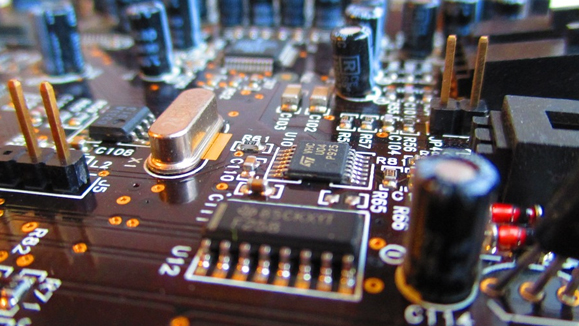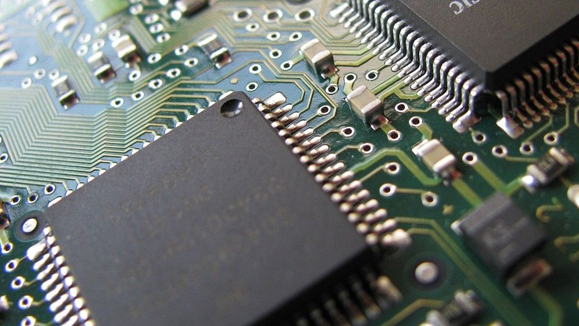News
Silicon Carbide -- The Rising Third Generation Semiconductor Material
Silicon carbide is an inorganic substance with the chemical formula of SiC. It is synthesized by heating reaction in a special resistance furnace using silica, carbon, sawdust and industrial salt as basic raw materials.
01
Silicon carbide industry chain
The silicon carbide industry chain involves multiple complex technical links, including silicon carbide powder, silicon carbide ingot, silicon carbide substrate, silicon carbide epitaxy, silicon carbide wafer, silicon carbide chip and silicon carbide device packaging. Due to the difficulty of material end preparation, low yield and small capacity, the important links of the current industry chain focus on the substrate and epitaxy, and the reliability of silicon carbide materials plays a decisive role in the performance of end devices.
Silicon carbide substrate
Substrate manufacturing is a link with high technical barriers and large value in the silicon carbide industry chain, and is the core material of the recently developed wide band gap semiconductor. The silicon carbide substrate can be divided into conductive substrate and semi insulating substrate according to the resistivity. The power devices made of SiC substrate grown on the conductive substrate can be used in high-voltage working scenarios such as new energy vehicles, power grids, photovoltaic inverters, rail transit, etc. Microwave RF devices fabricated by GaN epitaxy grown on semi insulating substrates are mainly used in RF switch, power amplifier, filter and other communication scenarios, which can meet the requirements of 5G communication for high frequency performance and high power processing performance.
Silicon carbide epitaxy
Silicon carbide epitaxial sheet refers to a silicon carbide sheet on which a single crystal film (epitaxial layer) with certain requirements and the same crystal as the substrate is grown. Epitaxial process is a very critical process in the whole industry. Since all devices are basically realized on epitaxy, the quality of epitaxy has a great impact on the performance of devices, but the quality of epitaxy is also affected by the processing of crystals and substrates. It is in the middle of an industry and plays a very critical role in the development of the industry.
Silicon carbide device
Power device is one of the important basic components in the power electronics industry, which is widely used in the fields of power conversion and circuit control of power equipment. As the core of electric equipment and systems, power devices are used to process, convert and control electric energy, manage more than 50% of the world's electric energy resources, and are widely used in smart grids, new energy vehicles, rail transit, energy development, industrial motors, data, household appliances, mobile electronic equipment and other aspects of national economy and national life, It is an indispensable core semiconductor product in the industrial system.
02
Application of silicon carbide in the field of new energy vehicles
The main application fields of silicon carbide include electric vehicles, charging piles, photovoltaic new energy, rail transit, smart grid, etc. Yole data shows that by 2025, the market size of silicon carbide in the global power electronics sector will exceed US $3 billion, more than 37% of the US $700 million CAGR in 2020. Specifically, in the field of automobile application, silicon carbide can be used in new energy vehicles to reduce loss, reduce module volume and weight, and improve endurance. The development of new energy vehicle technology requires high power and high power density for power devices. Benefiting from the volume of new energy vehicles, the market share of SiC devices in the field of new energy vehicles will witness explosive growth.
03
The third generation semiconductor materials have great potential
Silicon carbide is a wide band gap semiconductor material, also known as the third generation semiconductor material. The first generation semiconductor materials mainly refer to silicon (Si) and germanium (Ge) semiconductor materials, which are widely used, including integrated circuits, electronic information network engineering, computers, mobile phones, televisions, aerospace, various military projects, and rapidly developing new energy and silicon photovoltaic industries.
The second generation semiconductor materials mainly refer to compound semiconductor materials, such as gallium arsenide (GaAs) and indium antimonide (InSb). They are mainly used to make high-speed, high-frequency, high-power and light-emitting electronic devices (LED). They are excellent materials for making high-performance microwave, millimeter wave devices and light-emitting devices.
Si based devices achieve their performance in high voltage and high power applications above 600V; In order to improve the performance of devices under high voltage/high power, the third generation semiconductor material SiC (wide band gap) came into being.
The third generation semiconductors are mainly SiC and GaN. Compared with the first and second generation semiconductors, they have wider band gap, higher breakdown electric field, higher thermal conductivity and other performance advantages. Therefore, they are also called wide band gap semiconductors, especially suitable for 5G RF devices and high voltage power devices.
04
The rising third generation semiconductor materials
The third generation semiconductor materials, represented by SiC, will be widely used in optoelectronic devices, power electronic devices and other fields. With their excellent semiconductor properties, they play an important role in various modern industrial fields, with huge application prospects and market potential. The third generation of semiconductor materials ushered in an explosion, and GaN SiC stood on the strong wind. It is a semiconductor material with bright business prospects, and can be called a new generation of "golden track" in the semiconductor industry. After mass production, silicon carbide will break foreign monopoly and become a new breakthrough point for domestic chips.




